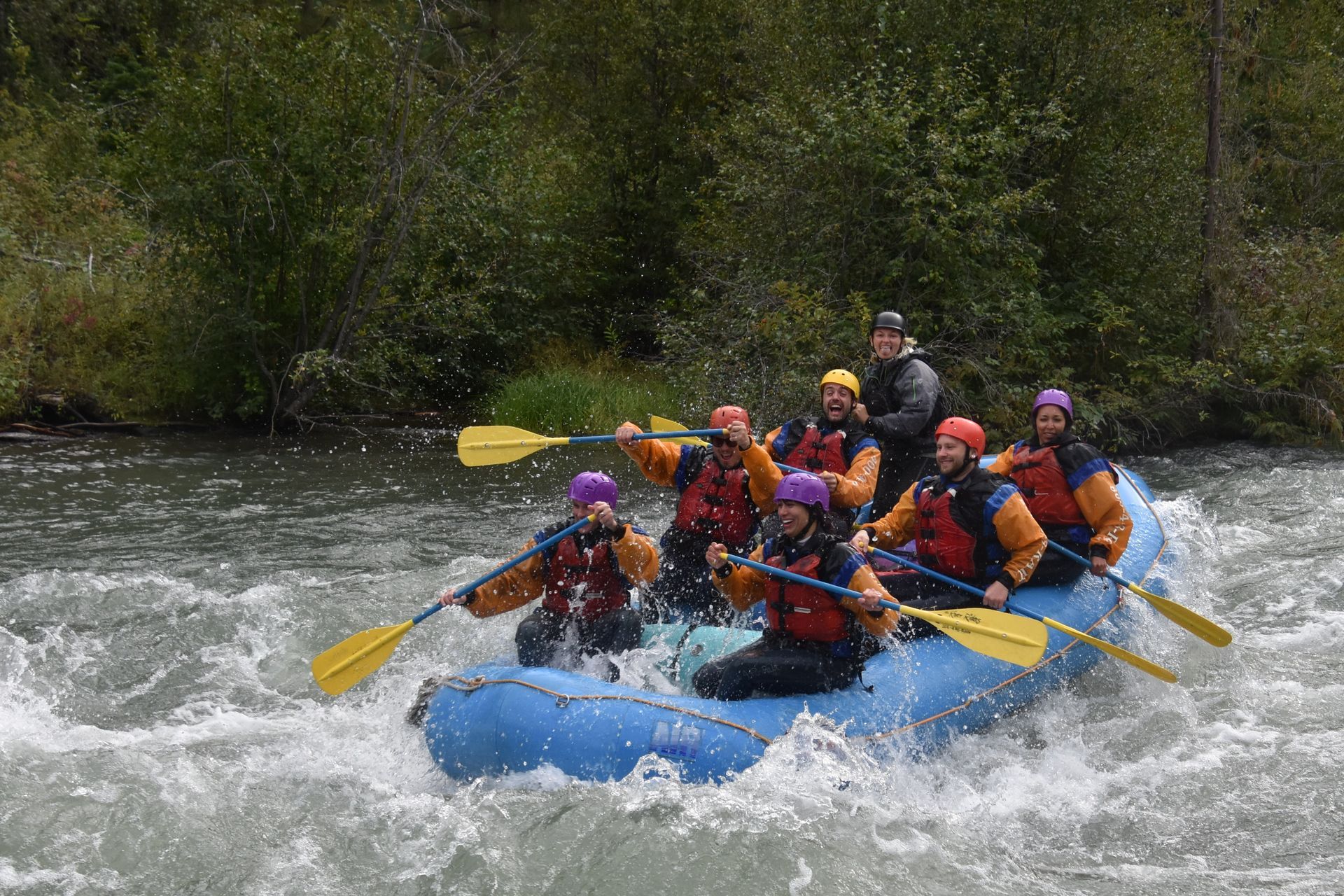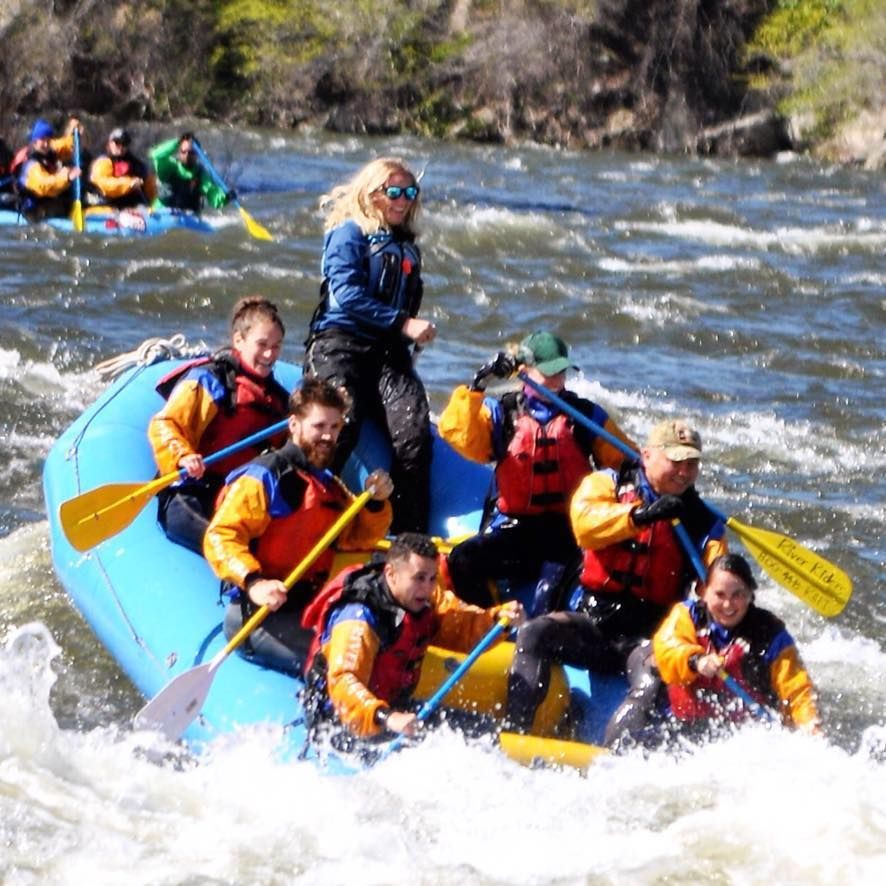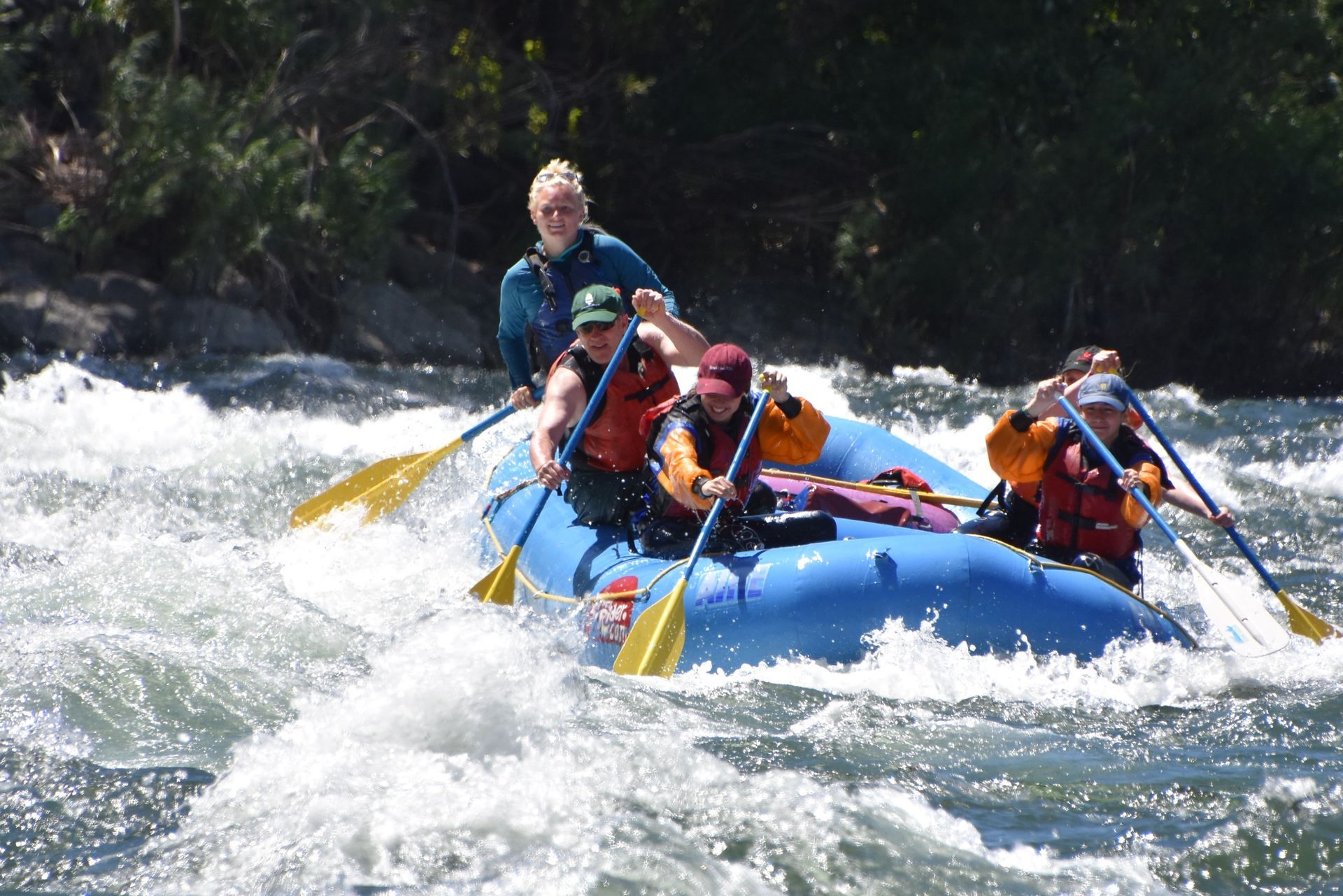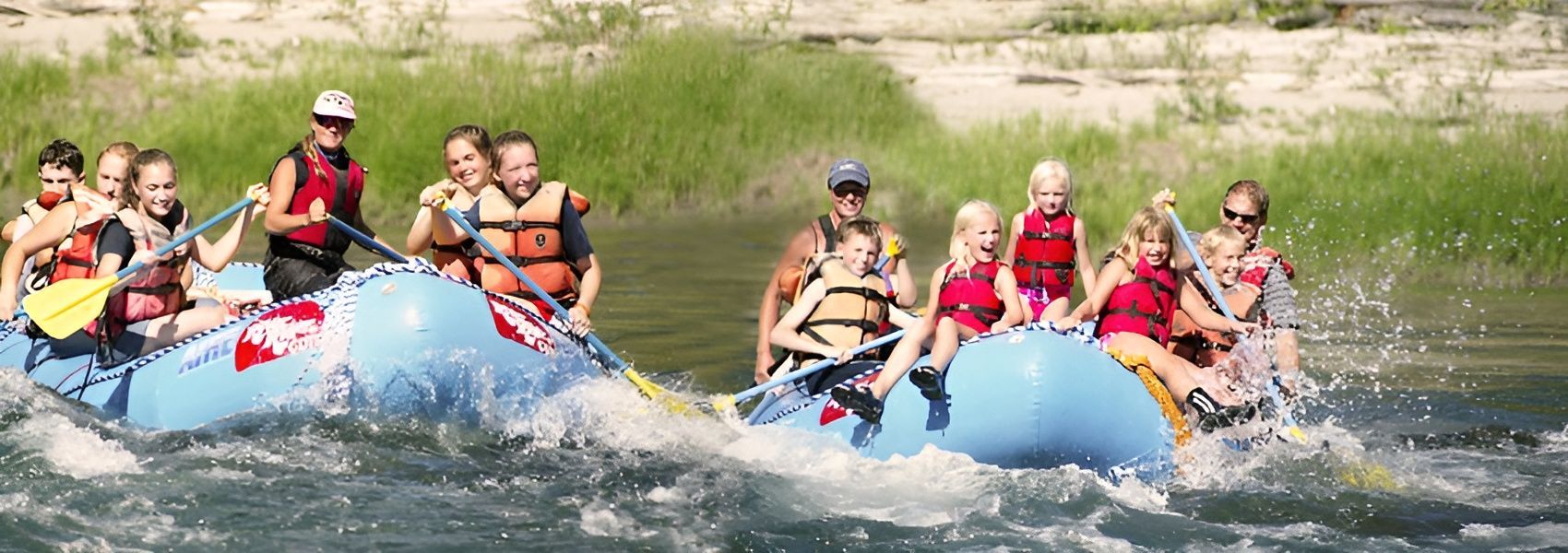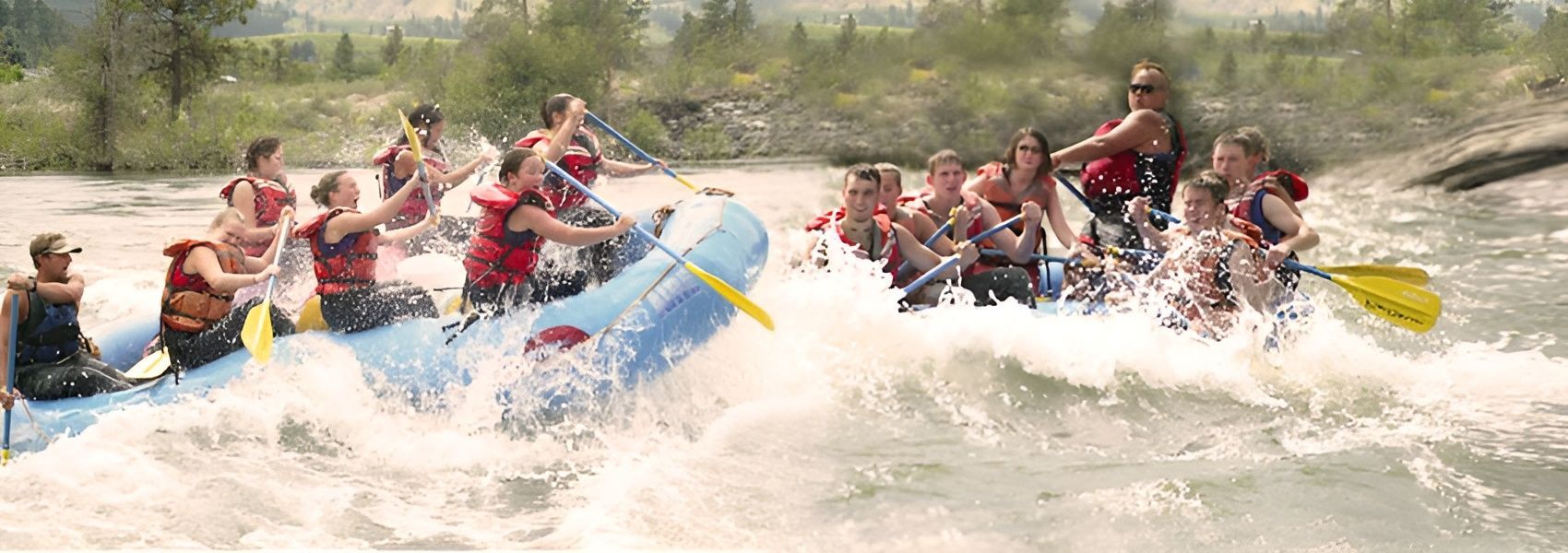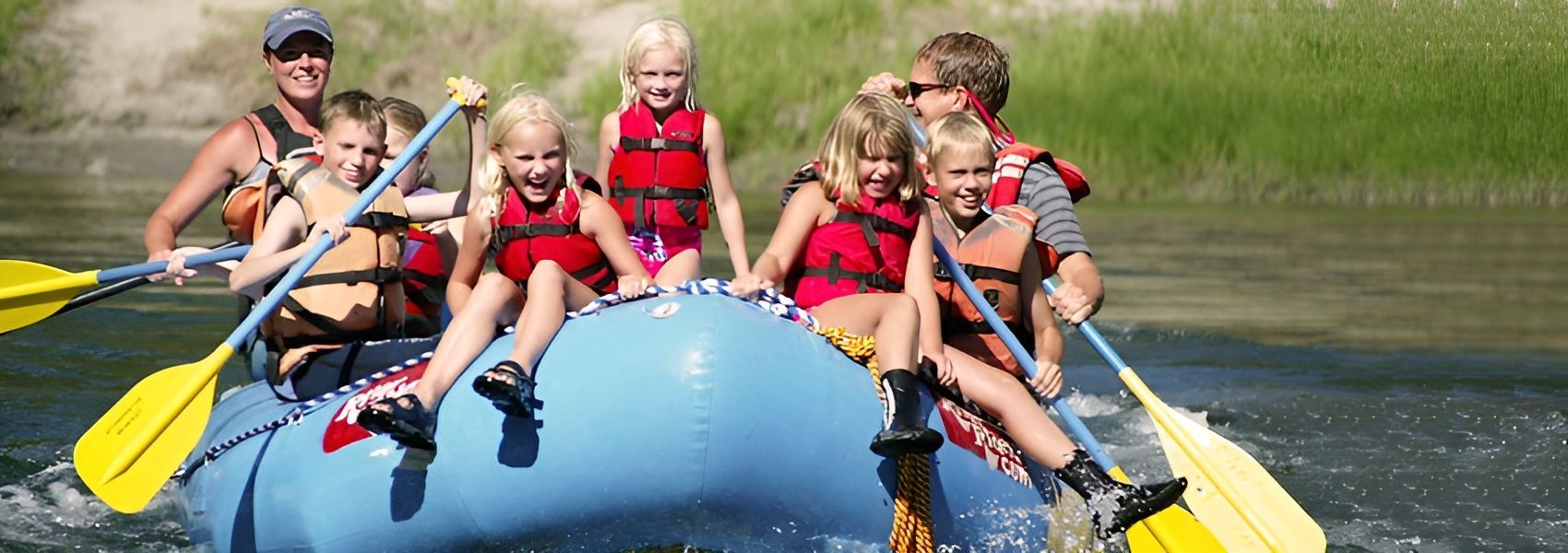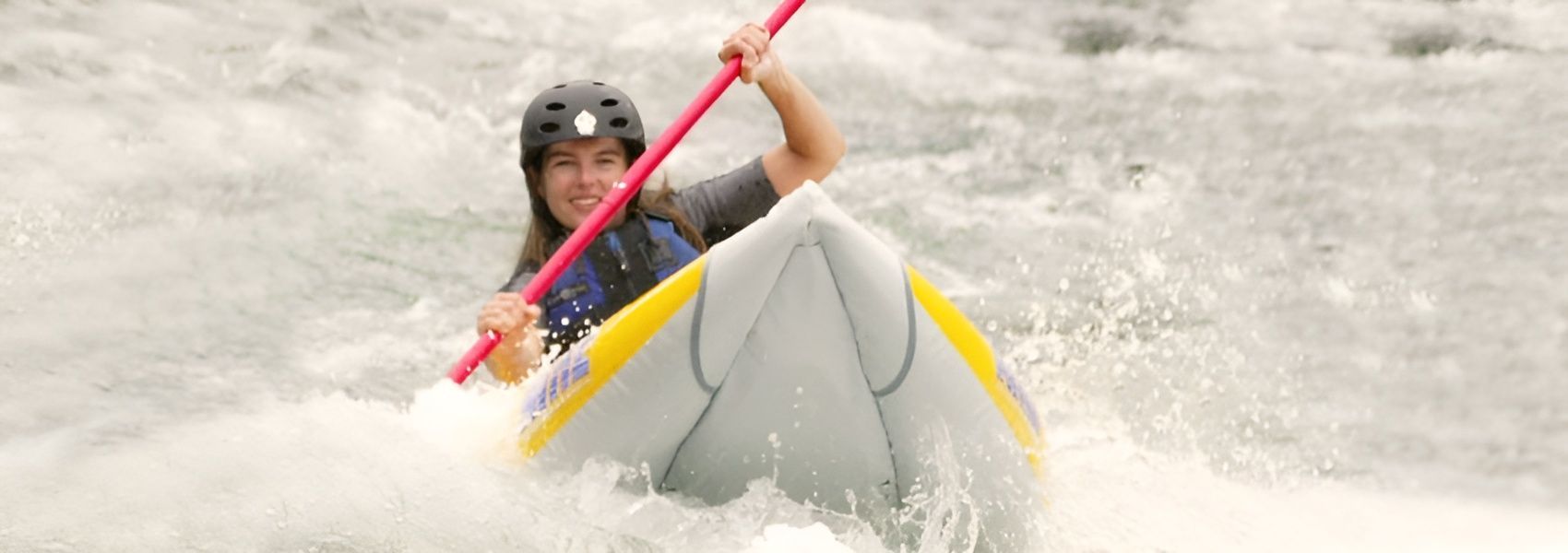Washington Whitewater Rafting - Frequently Asked Questions
How much do river trips cost?
Reservatios range from $85 - $105 per guest (depending on river and group size). 30 days in advance may be required unless special arrangements are made. Because space is at times limited, and some trips fill more than six months in advance, it is best to make reservations as early as possible. However, if you should wish to join a trip on short notice, please give us a call, for there may be an opening and we try to be as flexible as possible to accommodate your planned trip date.
When should I make a reservation?
Make reservations early! 30 days in advance may be required unless special arrangements are made. Because space is at times limited, and some trips fill more than six months in advance, it is best to make reservations as early as possible. However, if you should wish to join a trip on short notice, please give us a call, for there may be an opening and we try to be as flexible as possible to accommodate your planned trip date.
Can I get the Assumption of risk form before I get to the river?
Yes, just click Assumption of Risk form to get a copy you can print out.
We do require the guests of Riverrider.com, Inc to acknowledge the risk involved in the outdoor adventure activities we offer, and each person read and sign our "Assumption of Risk" form when checking in at the river and before participating in the activity.
How do I make reservations?
To reserve your trip just call our reservations center at
509-668-7238 from early 'til late 7 days a week. You can also make reservations online by clicking our 24 - 7 secure reservations page.
How do we get to the river?
For complete travel information-including directions, maps and travel times-click on the river you are planning to raft and scroll down through the information there. But please use a roadmap and www.mapquest.com to help your specific travel plans from your location to the river.
Nearby camping and lodging?
For suggestions on lodging and camping nearby, click the link at the bottom of the section of the river you're planning to do.
What's the minimum age for your rafting trips?
The minimum age varies according to the difficulty of the rafting run, and ranges from 4 or 5 on the Summertime Wenatchee during lower summer flows, to 14 on most of our Class IV to V trips.
Minimum ages are used as a guideline only; a child who is exceptionally small for their age may not be suitable for a particular rafting run, a particularly high flow or low flow on a particular rafting run, or may not fit correctly into our life jackets.
There are many factors to consider, the most important of which is the safety of your child, you, and others on the trip. Youths who are very outdoorsy and active and recreationally inclined can often go on a river that might not be OK for others and conversely even older kids who rarely venture from the TV room, computer mouse or the X-Box should go on the easy going trips first and work their way up to more challenging river runs. The final decision as to the suitability of a child for a particular run or trip will be left with the Trip Leader and/or area manager on duty on the day of your trip.
If you are unsure, call ahead, or let the booking staff know when you make your reservation.
Why choose RiverRider.com?
With RiverRider.com you get:
· All of Washington State's Best Rivers
· Professional, Friendly, Entertaining River Guides
· 30+ years of Experience
· Our Famous Attention to Detail and Safety
· State-of-the-Art Rafting and Safety gear
· Longtime Reputation for Leadership and Excellence
· Great and Famous Riverside BBQ
· A Fantastic Vacation or Excursion Value
· Family and Group Discounts
· Super Deals
· An Entire Company Dedicated to taking Extra Special Care of You!
Who can go whitewater rafting?
From mild, fun, forgiving class II to wild, rip roaring class V, RiverRider.com offers trips to suit just about everyone--including a full range of river trip choices throughout Washington State. Everyone, young and old, who is in reasonable physical condition is welcome!
Minimum Ages: Each river has a usual minimum age ranging form 4 or 5 on the class II - III Wenatchee River in lower summer months of July and August to 14 years old on Class V Skykomish River in the earlier spring high water season.
For Seniors: Healthy people of all ages, including spry energetic elderly folks love rafting with RiverRider.com! For fit, active people over 65, we recommend, as a first step, the Wenatchee River. From there, you may want to try the Tieton, Nooksack and White Salmon Rivers which are usually class III class IV!
Non-swimmers are welcome on class II - IV, provided they are comfortable with the possibility that they might "take a swim", that is, fall out of the boat. In this case their life jacket and wetsuit would keep them afloat until they are pulled back into the raft. Swimming ability is very strongly recommended on the class V Skykomish river.
Size: We have wetsuits and booties for everyone from small children to XXXL folks. Each participant must fit into one of our life jackets with all buckles fastened. Our life jackets fit a maximum torso circumference of 52 inches.
Medical Conditions: People with a history of heart trouble, asthma, epilepsy, allergy to bee stings, or any other potentially serious medical condition should consult their doctor before coming on a rafting trip.
Pregnancy: For safety and liability reasons, we advise pregnant women that they should consult their doctor before coming on a rafting trip or not to participate in any of our activities.
Language: For safety reasons on class IV and V, all participants must be able to understand our safety talk and guide's instructions, which are normally delivered in English. On class II (easier rivers), non-English speakers are most welcome and, unless other arrangements are made, must bring an interpreter.
If you have any particular concerns about any of these issues, please feel free to call our reservation center at
509-668-7238.
Which river is best for us?
RiverRider.com offers a broad selection of spectacular river trip choices spanning the full spectrum of excitement and challenge levels in Washington State. Key factors in choosing the best river for you are location, level of excitement and challenge, number of days you have to spend in the area you will be rafting, and the age, paddling skills and physical abilities of each member of your group. Other things to consider might include sunny weather in Eastern Washington, hiking, fishing, and boating, the availability of free or fee camping and proximity to intriguing nearby attractions such as national parks and forests, towns oriented towards recreation or shopping, restaurants, hotels and campgrounds.
What does the class of the river stand for?
Class I: Relaxing - Waves so small you may not even get wet.
Class II: Easy does it - Clear passages and moderate waves.
Class III: Adventurous - Lots of waterslide-like waves and eddies, rapids with clean passages.
Class IV: Thrilling - Long rapids, powerful waves with big drops.
Class V: Awesome - Long exciting rapids, big technical drops & steep gradient.
Class VI: Don't try it - This is a novel alternative to jumping off the Golden Gate Bridge.
How many people ride in each boat?
This can vary depending on the size of the river and volume of water during the rafting season. On the larger volume rivers - Wenatchee, Methow, Tieton, Skykomish -our boats accommodate up to 8 people plus their guide and at times if a group has an extra person or child some guides can place an additional paddler on the bow of the raft as a "wave-biter" or "bow-crasher"! On other rivers, especially the White Salmon with it's Husum Falls drop our boats generally have 6 paddlers plus the guide.
Is rafting dangerous?
Rafting is thrilling, exciting, wet, wild and unbelievably fun. That said, as with all outdoor adventure activities, rafting involves an element of inherent risk. Our guides are trained to minimize these risks, and, statistically, rafting is far safer than many other outdoor sports. The most common injury on most rafting trips is sunburn, and most other injuries occur on land, especially when getting into and out of the boats.
We take many first timers as well as those who do not consider themselves strong swimmers on our rafting trips every day and they have a great time! When you boat with RiverRider.com, all of your equipment, from your Coast Guard approved, high-float life jacket, to your rugged yet lightweight, high-tech, reinforced, T-grip paddle, to your virtually indestructible, self-bailing, compartmented and unsinkable raft, is state-of-the-art and will serve you well. Your guide will teach you the principle of self-rescue and will also have his or her eye on you should you accidentally bump out of the raft. He or she will quickly work with your paddle companions to help you get back in the boat.
How easy is it to learn to raft?
It's easy! Our experienced guides will teach you the basics including everything from how to hold your paddle, how to turn the boat, how to stop or pick up speed and what to do if you fall out. We make sure you are comfortable, relaxed and having fun from start to finish. Guiding rafts is more difficult, and we offer whitewater guide schools that will give you the basic skills you'll need to start running rivers on your own, or for guiding commercially with RiverRider.com.
What happens on a typical trip?
You'll meet your trip leader and guides at your trip's designated rendezvous place (available here on our website) and time. He or she will collect your Assumption of Risk forms, distribute wet suits, booties, splash jackets etc and then they have everyone join him or her on the river for the safety and paddle talk and then launch onto the river or we have everyone hop on the RiverRider.com shuttle bus which takes you to our riverside raft "put-in" location. The safety and paddle talk will teach you about how you, your paddle crew and your guide will work together as a team on the water. Then you and your friends will head to your boat! On most of our trips we run paddle boats. You will be paddling with the rest of your crew to power your boat down the river. The boats typically seat six to eight people and a guide. Before you leave shore, our guides will instruct you on efficient paddling technique. Once in the boat, your crew will push off out onto the water where your guide will give you further instruction on how to follow his or her speed and turning commands. Then you'll head down river, and have the time of your life! At the "take-out" or trips ending point you will either be where the cars are parked or the RiverRider.com shuttle bus will take you back to your cars at the "launch point". If the trip you have scheduled is our 9AM trip then you meet us at 9AM or a few minutes earlier, and raft the river and you're all done by 12:30 to 1PM; and if scheduled for the 1PM trip, show up at 1PM or a few minutes beforehand and we'll raft the river be all finished at approximately 4:30 to 5PM.
What should I wear on the river?
You should be ready to get wet! We provide 3mm "Farmer John" (no sleeves)wetsuits, booties, nylon splash jackets (and helmets on some Class 4 - 5 rivers).The easiest thing to do to prepare is simply have a swim suit or nylon running shorts or lycra work-out suit beneath your regular clothes. Then when you meet us just slip out of your street clothes and slide on into the wetsuits/booties and leave your clothes in the car. In the spring time and on cooler days (and always on Class V rivers), we require wet suits or wet suit/splash jacket combinations. For possible chilly, cloudy days or a chilling breeze bring an extra sweater or insulating shirt along which can be worn under our splash jacket and over the wetsuit. And what works best for this added warmth on cool days? Garments made of synthetic fleece, polypro, capilene, micro-fibers, or wool garments. In cold weather please don't wear cotton. Wet cotton saps heat, while fleece, poly, wool, and similar fabrics provide insulation even when wet. WARM RAFTERS are HAPPY RAFTERS!! In the warm weather of summer, we may make wetsuits optional, so shorts and a T-shirt are good.
Shoes: We provide neoprene wetsuit booties for all so just leave your shoes with your street clothes in your vehicles. Wet suit booties are good protection in most conditions but if it is very cold then a pair of wool socks worn under the booties.
Sunglasses, especially prescription glasses, should have a croakie or other retainer that cinches tight. Instead of contact lenses, it is probably better to wear an old pair of glasses with a head strap although many people wear disposable soft lenses which seem to stay in.
Sunscreen: Use sunscreen, especially on your more horizontal surfaces, including tops of upper legs, shoulders, back of neck and top of nose. However don't put sunscreen on your forehead or the backs of your legs. It may run into your eyes, or cause you to slip off the boat. Protect your forehead and face and back of neck with a hat secured by a chin strap.
Does the river go around in a circle back to where we started?
No, that only happens at Walt Disney World. In the real world the river flows down the valley and the trip ends many miles away from the launch point and thus the River Rider buses and vans to return to the start point.
What about photos, cameras, videos and DVDs?
Independent photo companies shoot most of our trips and normally you will have an opportunity to view and purchase these after your trip. You are also welcome to shoot your own photos, etc. However, we recommend bringing only waterproof cameras. We have available on the Wenatchee River disposable waterproof cameras, which are well suited to rafting. The quality of the pictures is pretty good, and if you lose it, it's not the end of the world. If you do bring a non-waterproof camera or video camera, please make sure you also bring a waterproof pouch or box - we can't guarantee their safety in our dry bags.
Should I tip my guide?
Our guides work hard to provide you with the finest possible trip, much the way most restaurant or hotel staff strive to provide great service for you. If you feel your guides' services have been extraordinary, a gratuity would be appreciated. This can be given to the guide individually or to the River Rider "Trip Leader'" who will distribute it equally among the crew. As with all tipping, this is of course optional and solely at your discretion and is not something we process through our reservations office.
What should I bring with me in the boat?
On most of our one-day trips you may bring a personal water bottle, and some sunscreen to touch-up during the day, and a warm shirt/sweater if you think you may want it later. Keys, prescription glasses without a retention strap, wallets, or anything you can't lose, should not be brought on the boat with you. On most trips there will often be a "dry" bag into which you can place the extra sweater/shirt or jacket, hat, etc. The "dry" is not guaranteed.
If you have medications such as an Athsma inhaler, an Epi-pen (for bee-sting allergies) or other items that should stay complete dry but remain accessible, place them inside two ziplock bags, and let your guide and the trip leader know. They may put them in with the first aid kit that is brought on every trip, or some other more secure location. Optionally, as mentioned above, a waterproof camera will always be fun to have, and allow you to get some great photos from the river, in addition to those that the professional photographers take. (But remember to check with your guide before taking photos--they may need you to paddle!)
How deep is the river?
The rivers vary in depth but the water at the shore is of course very shallow but then out in the middle of the channel can be as much as 20 - 30 feet deep or maybe only a few inches depending on the underwater geographical features.
If you have any questions, ask your guide, or our friendly staff members when you check in for your trip.


